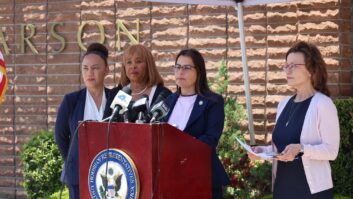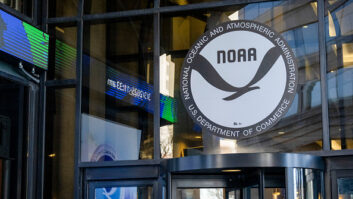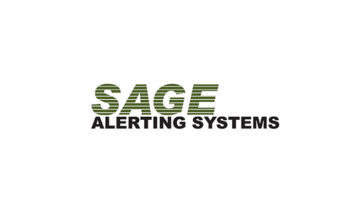EAS experts believe the FCC’s Further Notice of Proposed Rulemaking on the Part 11 changes will be published in the Federal Register next week — kicking off a 30-day comment period (Docket 04-296) with replies due in July.
That was one of the news nuggets to come out of a webinar June 16th produced by the EAS committee of the National Alliance of State Broadcasters Associations and NAB. Maine Association of Broadcasters President/CEO Suzanne Goucher moderated the panel, which consisted of FEMA Integrated Public Alert & Warning System Program Manager and Division Director Antwane Johnson, Davis Wright Tremaine Partner David Oxenford and NAB Senior Director of Engineering & Technical Policy Kelly Williams.
They discussed changes the commission is considering to update its EAS rules so that broadcasters and other alerting participants can implement next-gen Common Alerting Protocol – EAS. They said the question of whether the Sept. 30 deadline for stations to have CAP-compliant EAS equipment installed will hold up or again be delayed is being hotly debated by broadcasters.
The fact that the agency would review comments on the issue in the summer, close to the September CAP-EAS box deadline makes it difficult for manufacturers to meet certification requirements, as well as to install and test EAS gear by the deadline, said Oxenford. The FCC asked in its notice that if there was a new deadline, what should that be and what would trigger the new date.
“It reminds me of the DTV transition,” said Oxenford, noting there’s a deadline in place but rules are still being crafted. “I think larger broadcasters have already bought CAP-EAS equipment on the assumption that equipment will meet the requirements,” but smaller stations may hold back on purchases. “They don’t want to buy a box when changes [to the requirements] might still be made,” he said.
Kelly said, “You need to have an audio output out of the box and an Internet connection into the box.” Everything else is feature-driven by what manufacturers’ customers want, he said.
The FCC is also asking for comment on whether to allow intermediary devices and certify those. Williams defined an intermediary device as a CAP-to-EAS translator box that goes in front of a station’s current EAS encoder/decoder in the airchain. He thinks the FCC should allow the devices. Some broadcasters may prefer to go this route if it turns out to be less expensive than purchasing totally new gear.
Goucher asked Johnson if FEMA-IPAWS will be ready by Sept. 30 to send a CAP-enabled EAS message for re-transmission by stations. “Absolutely,” he said, adding the office would be ready to release the necessary Internet address that broadcasters would go to in order to receive a CAP-EAS alert message within “the next several weeks.”
Oh, and the president won’t be the voice on the national EAS test this November, nor will the message be political, said Johnson, poking fun at trade press for speculating on those two things. Officials haven’t yet decided whose voice will be used; they have decided the message on both radio and TV should be consistent, Johnson said.
The committee planned to post the webinar to its www.easalert.org website where two other web presentations from March and February are archived. They urged members of the industry to file comments on the further EAS notice to Docket 04-296.
— Leslie Stimson
Related:







